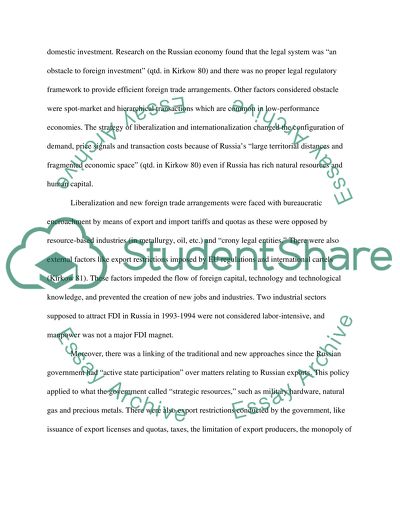Cite this document
(“Economic Growth in Russia after the Collapse of the Soviet Union Essay”, n.d.)
Economic Growth in Russia after the Collapse of the Soviet Union Essay. Retrieved from https://studentshare.org/macro-microeconomics/1493225-economic-growth-in-russia-after-the-collapse-of-the-soviet-union
Economic Growth in Russia after the Collapse of the Soviet Union Essay. Retrieved from https://studentshare.org/macro-microeconomics/1493225-economic-growth-in-russia-after-the-collapse-of-the-soviet-union
(Economic Growth in Russia After the Collapse of the Soviet Union Essay)
Economic Growth in Russia After the Collapse of the Soviet Union Essay. https://studentshare.org/macro-microeconomics/1493225-economic-growth-in-russia-after-the-collapse-of-the-soviet-union.
Economic Growth in Russia After the Collapse of the Soviet Union Essay. https://studentshare.org/macro-microeconomics/1493225-economic-growth-in-russia-after-the-collapse-of-the-soviet-union.
“Economic Growth in Russia After the Collapse of the Soviet Union Essay”, n.d. https://studentshare.org/macro-microeconomics/1493225-economic-growth-in-russia-after-the-collapse-of-the-soviet-union.


